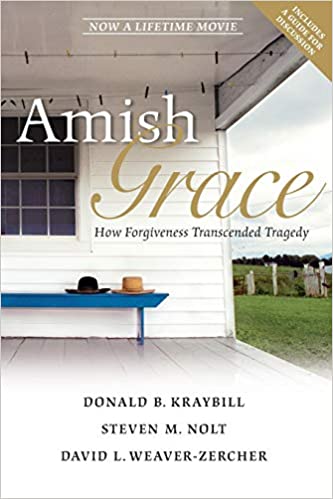AMISH GRACE: How Forgiveness Transcended Tragedy
- Approximate Time Commitment: 7 minutes
AMISH GRACE: How Forgiveness Transcended Tragedy was written the following year by three professors who specialize in the life and faith of the Amish. This book review was written by Hank Griffith of South Suburban Evangelical Free Church in Apple Valley, Minnesota.
Resource Description
San Francisco: Jossey-Bass (John Wiley and Sons), 2007
On October 2, 2006, a shooting occurred at the West Nickel Mines School, an Amish one-room schoolhouse in the Old Order Amish community of Nickel Mines, a village in Bart Township, Lancaster County, Pennsylvania. Gunman Charles Carl Roberts IV took hostages and shot eight out of ten girls (aged 6–13), killing five, before committing suicide in the schoolhouse. The emphasis on forgiveness and reconciliation in the Amish community’s response was widely discussed in the national media. The West Nickel Mines School was torn down, and a new one-room schoolhouse, the New Hope School, was built at another location.
AMISH GRACE: How Forgiveness Transcended Tragedy was written the following year by three professors who specialize in the life and faith of the Amish. I found this 200 page work interesting, inspiring, and easy to read. I would certainly recommend it to you, especially if you can find it in a library or buy it to pass along to others as it is not the kind of book you would likely go to over and over again.
Through this book I learned so much about the Amish, particularly about their view of forgiveness. It explores the question of how the Amish were able to forgive so quickly. The four chapters in the second part of the book were of great interest to me personally. They’re entitled the habit of forgiveness, the roots of forgiveness, the specialty of forgiveness, and the practice of forgiveness.
I was deeply moved and inspired by their example of forgiveness. However, I was not totally convinced of their theological rational for it. The Amish see forgiveness as essential for eternal salvation, not salvation by works, but close to it in my opinion, whereas evangelicals believe that the atonement of Christ is the basis of salvation to those who repent of their sins and put their trust in Christ alone. This basic New Testament teaching does not seem to be stressed by the Amish as much as I would have expected it to be. (However, I realize various Christian traditions understand salvation differently.)
I discovered many interesting practices in Amish Grace, for example, “shunning”, which is similar to excommunication in other Christian traditions. I learned that the Amish can “forgive” one of their own for something he has done against them, but they cannot officially “pardon” and reinstate him unless he comes back to the community in full repentance.
The 22 page appendix on the history of the Amish of North America was especially helpful to me. It clearly and succinctly explains the history of Anabaptists, Amish, and Mennonites containing lots of interesting information on these groups. For example, I was surprised to learn that there are 175 Amish settlements spread across twenty-seven states and the Canadian province of Ontario. Altogether these settlements include about sixteen hundred church districts. I was also surprised to learn that the Amish population is doubling every twenty years. In addition, I found it fascinating that 90 percent or more of their youth join the church after being given a period of freedom in their late teens. (This period is called “rumspringa”, which literally means “jumping or hopping around.”)
I’ll end this review with a short summary of Amish forgiveness from the end of the book.
For the Amish, gracious remembering involves habits nurtured by memories of Jesus forgiving his tormentors while hanging on a cross and of Dirk Willems returning to pull his enemy out of the icy water. (The story of this Dutch martyred Anabaptist is often told to Amish children to inspire them to love and forgiveness.) When one of the students, thirteen-year old Marian, said “shoot me first” in the school house, and when adults in her community walked over to the killer’s family with words of grace a few hours after her death, they were acting on those habits. And just as surely their actions at Nickel Mines will be recounted around Amish dinner tables for generations to come, creating and renewing memories about the power of faith, to respond in the face of injustice – even violence – with grace.
In a world where faith often justifies and magnifies revenge, and in a nation where some Christians use scripture to fuel retaliation, the Amish response was indeed a surprise. Regardless of the details of the Nickel Mines story, one message rings clear: religion was used not to justify rage and revenge but to inspire goodness, forgiveness, and grace. And that is the big lesson for the rest of us regardless of our faith or nationality.
Only logged in customers who have purchased this product may leave a review.



Reviews
There are no reviews yet.